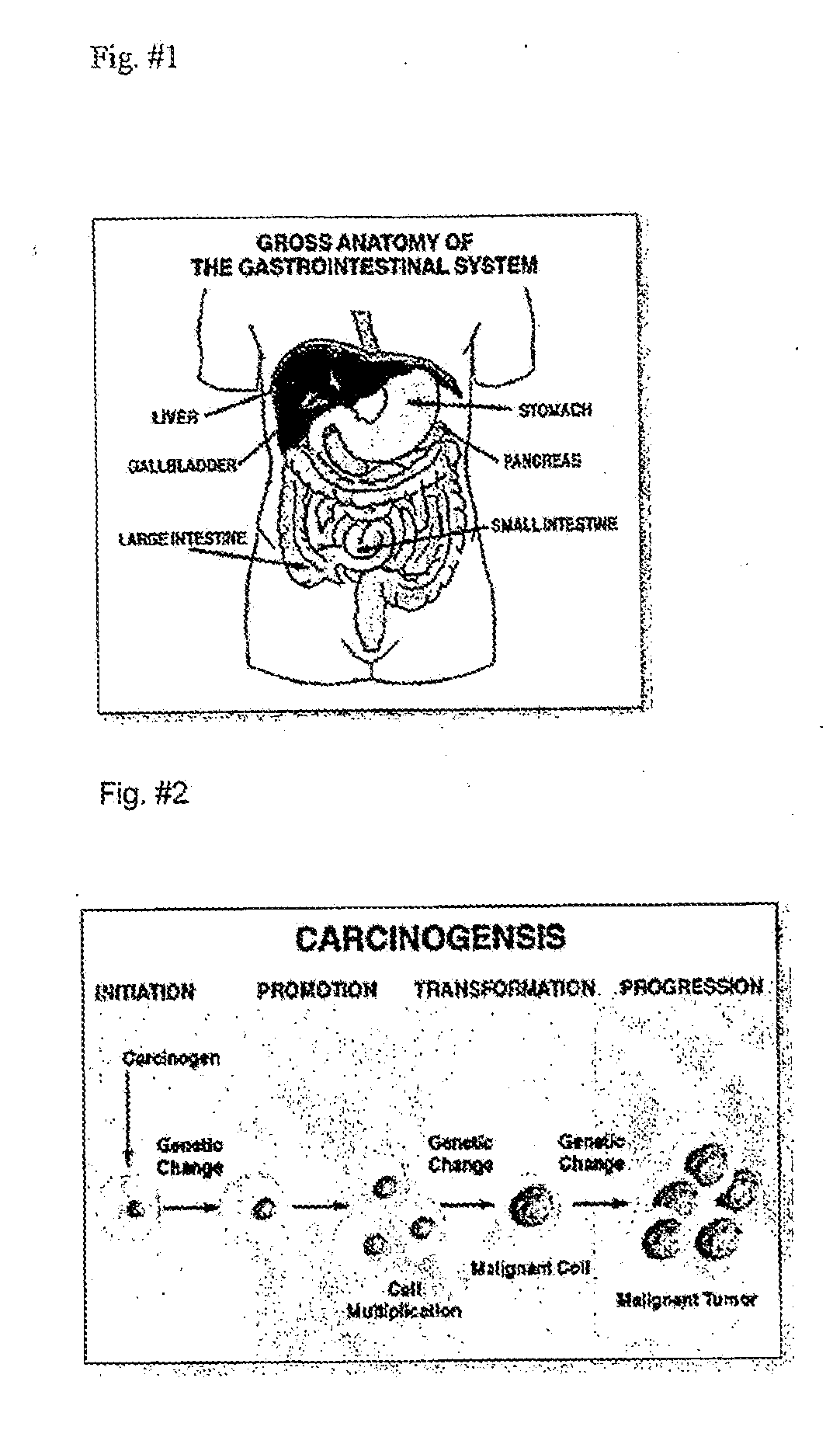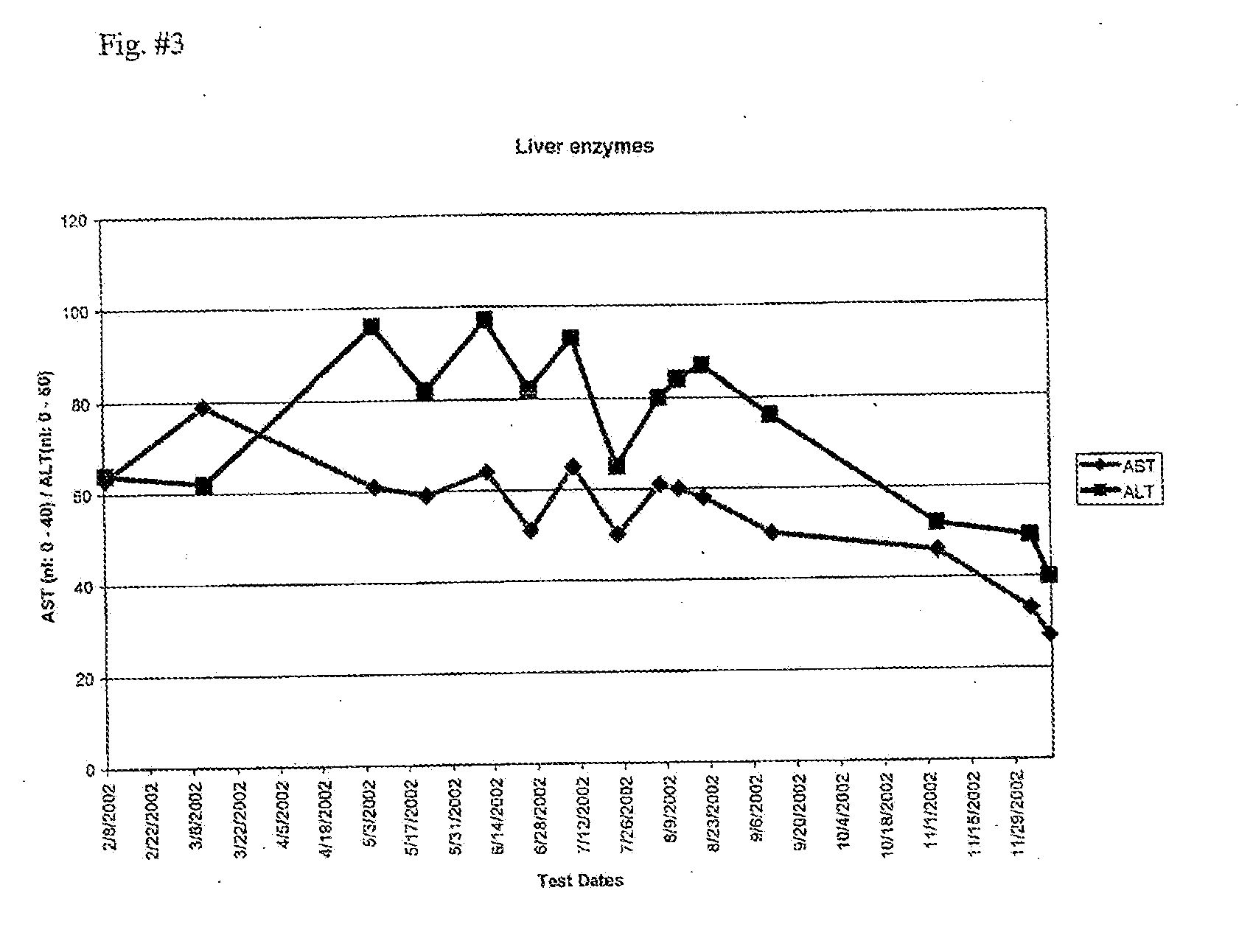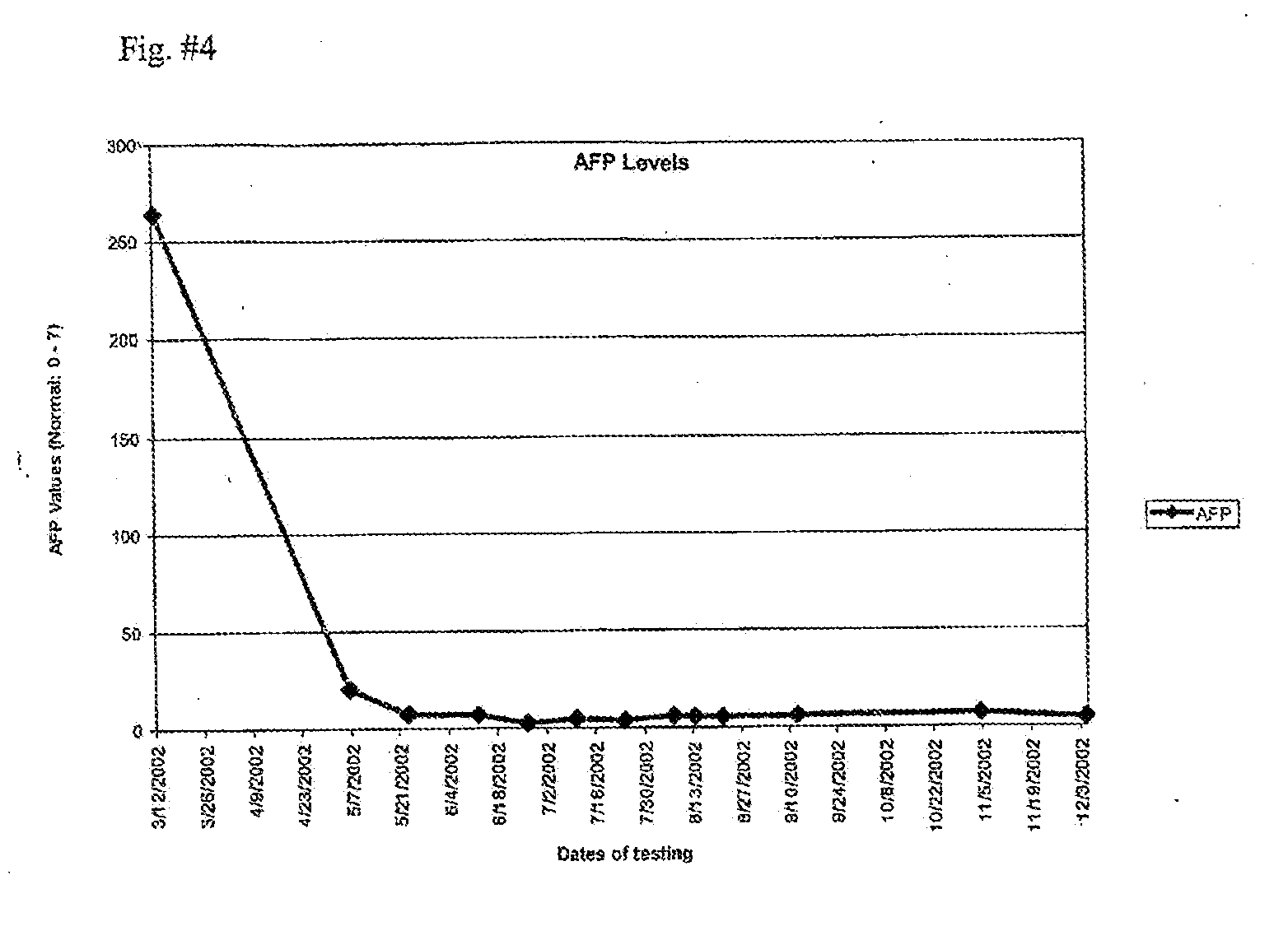Nutraceutical for the prevention and treatment of cancers and diseases affecting the liver
a cancer and liver disease technology, applied in the direction of biocide, plant/algae/fungi/lichens, drug compositions, etc., can solve the problems of poor treatment options, no definitive cure, and unique vascular architecture of the liver providing unparalleled access to nutrients and xenobiotics
- Summary
- Abstract
- Description
- Claims
- Application Information
AI Technical Summary
Benefits of technology
Problems solved by technology
Method used
Image
Examples
example 1
[0122]The retinoids are derivatives of vitamin A They have diverse structures, pharmacological profiles, receptor affinities, and biologic activities. Experimental animal models, cellular models, epidemiologic data and clinical trials provide a strong rationale for the use of retinoids in cancer therapy and prevention. Vitamin A deficiency in experimental animals has been associated with a higher incidence of cancer and with increased susceptibility to chemical carcinogens (Dragnev, K. H., J. R. Rigas, et al. (2000). “The retinoids and cancer prevention mechanisms.”Oncologist 5(5): 361-8).
[0123]Basic scientific studies have highlighted key regulators of the retinoid signaling pathway. Retinoids signal cellular effects through nuclear retinoid receptors and their coregulators, which leads to ligand-dependent transcriptional activation of target genes and ultimately signals retinoid growth and differentiation effects.
[0124]Retinoids bind their nuclear receptors through ligand-binding ...
example 2
[0128]Aloe-emodin is an anthraquinone that is a major constituent of the aloe vera plant The aloe vera plant has been shown to have many medically beneficial effects, especially in areas of wound and burn healing. Kuo et al. studied the effect of aloe-emodin on two human hepatoma cell lines (Kuo, P. L., T. C. Lin, et al. (2002). “The antiproliferative activity of aloe-emodin is through p53-dependent and p21-dependent apoptotic pathway in human hepatoma cell lines.”Life Sciences 71(16): 1879-92). They determined that aloe-emodin induced apoptosis through the p53-dependent pathway in two human hepatoma cell lines (Kuo et al. 2002).
[0129]The tumor suppressor gene p53 is an important molecule in the process of apoptosis. Once p53 is activated, the outcome of cellular response is either cell cycle arrest or apoptosis. p53 activates downstream effectors like p21 / WAF1 protein that contribute to the arrest of cell in G1 phase by inhibition of cyclin-cdk complex. Activation of p53 also leads...
example 3
[0131]Vitamin K is a generic term for compounds that include phylloqinone (VK1), menaquinones series (VK2), and menadione (VK3). Physiologically, the natural K vitamins, VK1 and VK2, are known to act as cofactors for 7-carboxylation of selected glutamates in the N-termini of prothrombin and other VK-dependent coagulation factors. Hepatocellular carcinoma or heptoma cells have Unpaired ability to perform vitamin K-dependent carboxylation reactions. Therefore patients with hepatomas produce under-caxboxylated or immature prothrombin (des-y-carboxy prothrombin) that is secreted into the plasma. Deshcarboxy prothrombin has been found to be one of the most reliable markers for hepatoma (Nishikawa, Y., B. I. Carr, et al. (1995). “GroWth inhibition of hepatoma cells induced by vitamin K and its analogs.”J Biol Chem 270(47): 28304-10; Nishikawa, Y., Z. Wang, et al. (1999) “Inhibition of hepatoma cell growth in vitro by arylating and non-arylating K vitamin analogs. Significance of protein t...
PUM
 Login to View More
Login to View More Abstract
Description
Claims
Application Information
 Login to View More
Login to View More - R&D Engineer
- R&D Manager
- IP Professional
- Industry Leading Data Capabilities
- Powerful AI technology
- Patent DNA Extraction
Browse by: Latest US Patents, China's latest patents, Technical Efficacy Thesaurus, Application Domain, Technology Topic, Popular Technical Reports.
© 2024 PatSnap. All rights reserved.Legal|Privacy policy|Modern Slavery Act Transparency Statement|Sitemap|About US| Contact US: help@patsnap.com










